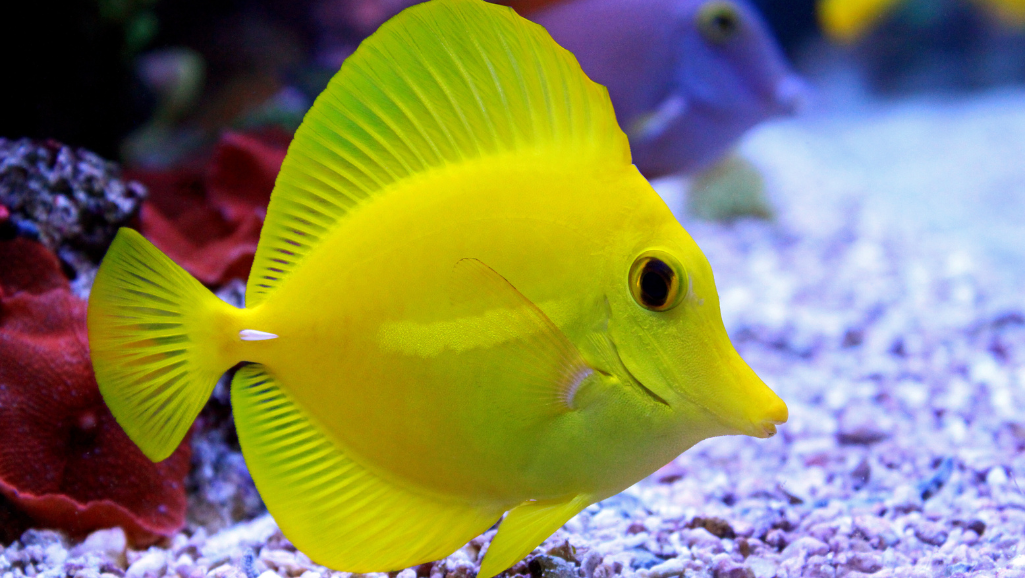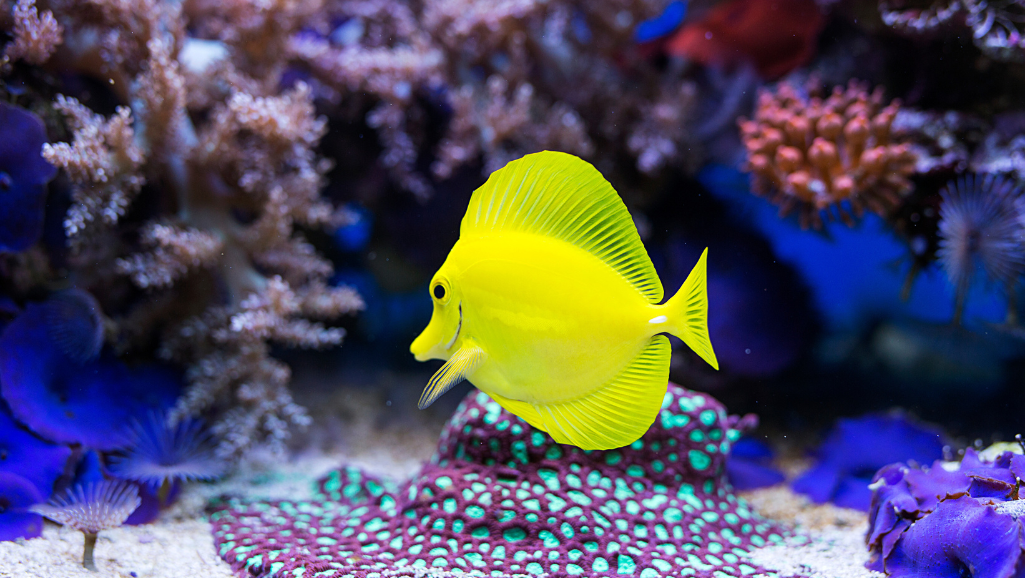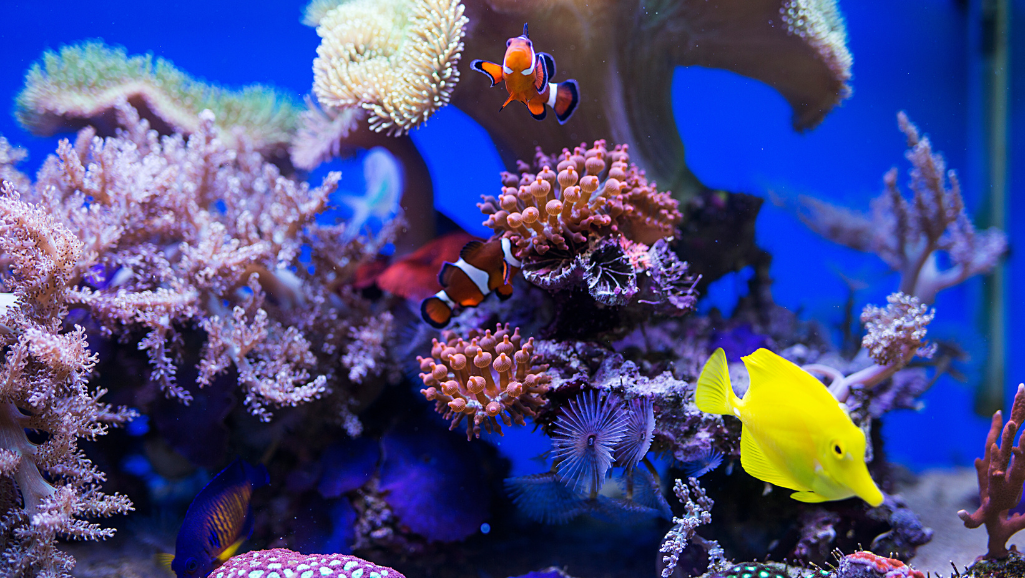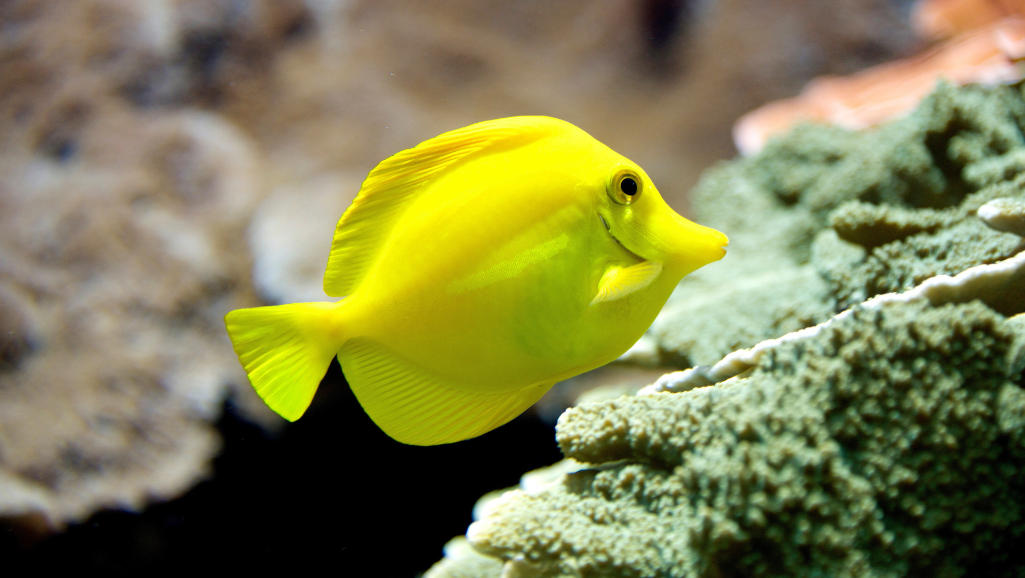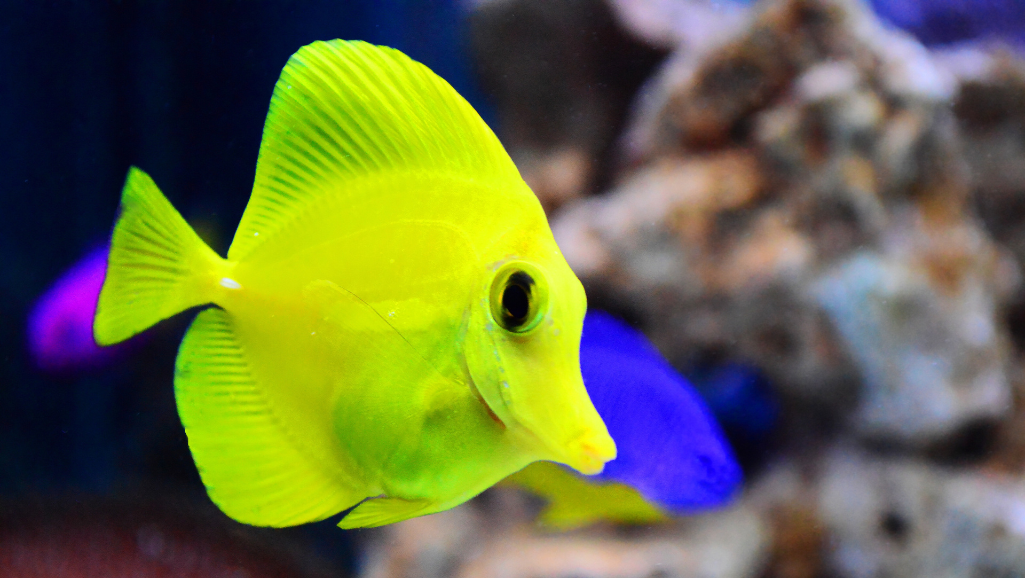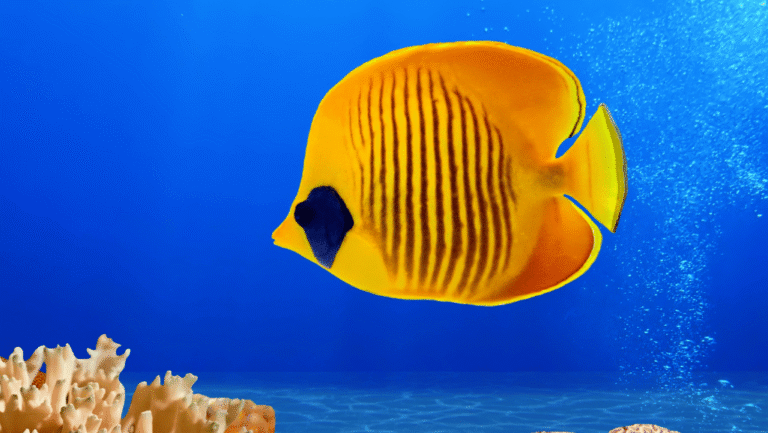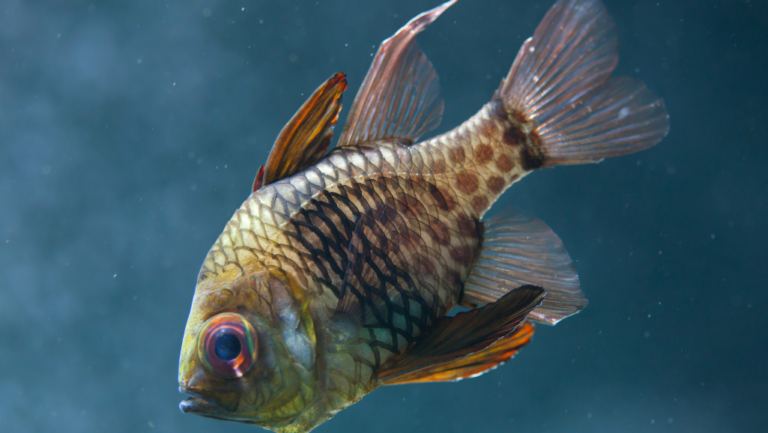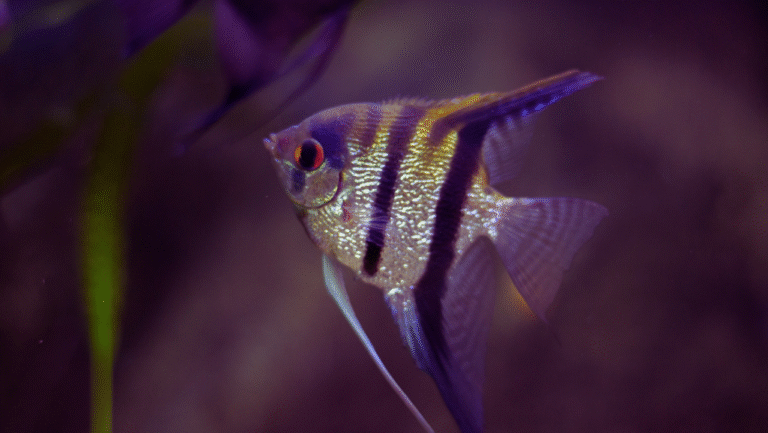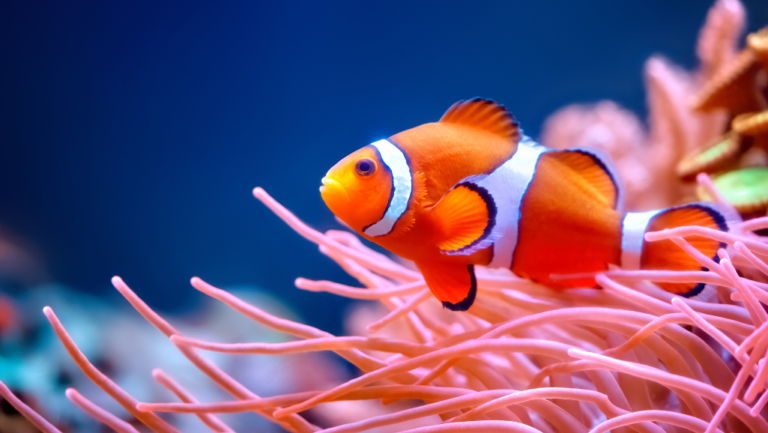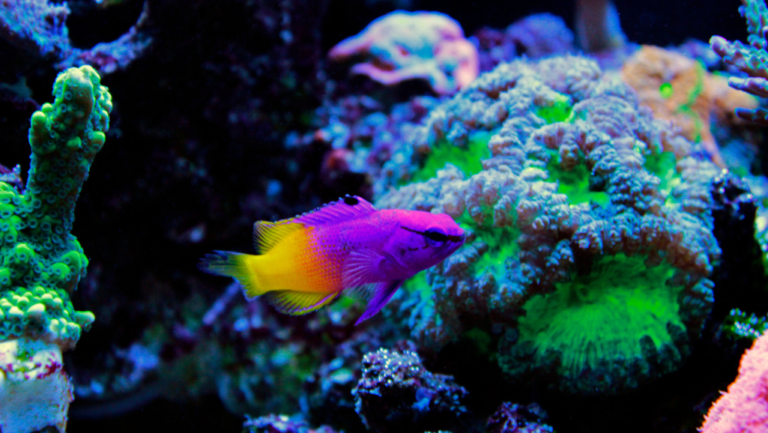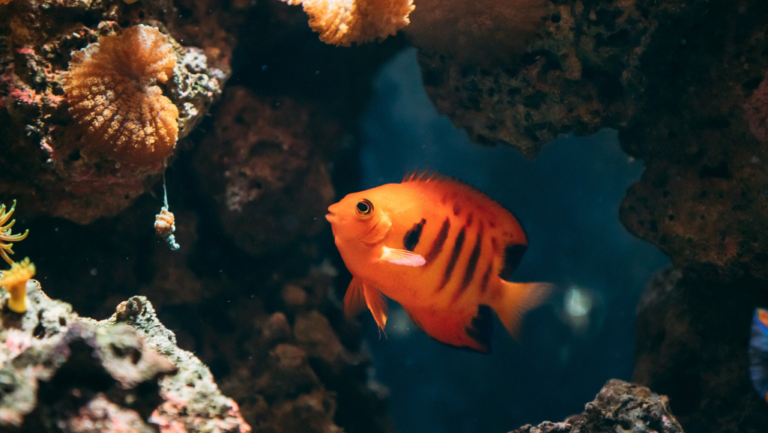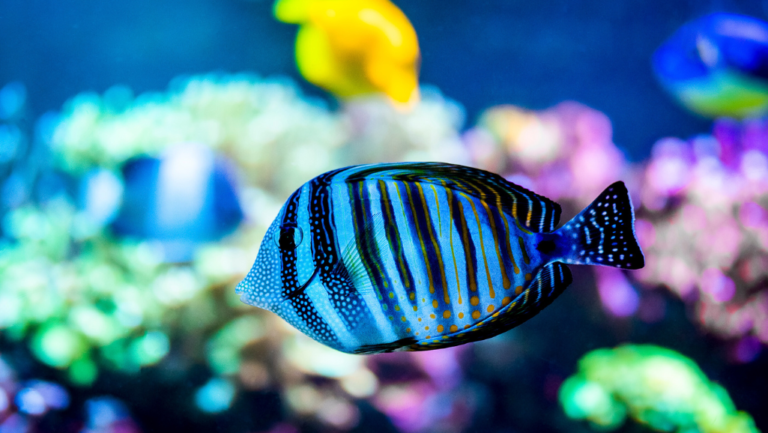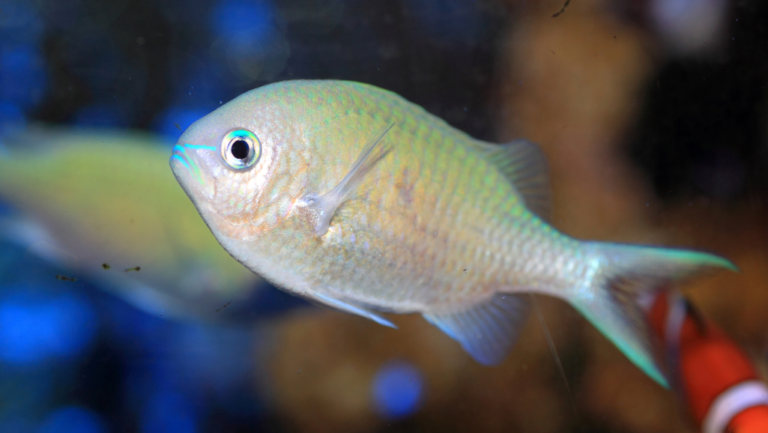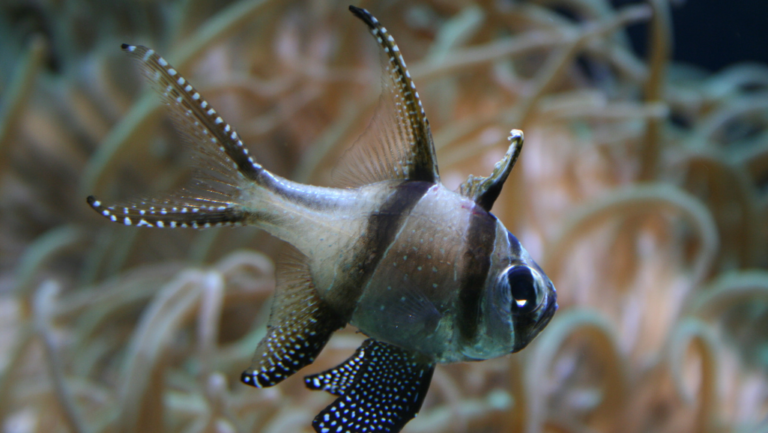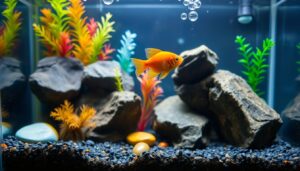The sight of a Yellow Tang swimming in a saltwater aquarium is mesmerizing. Known as Zebrasoma flavescens, this marine fish is loved for its bright yellow color. Found in the Pacific Ocean, from the Philippines to Hawaii, it’s a key part of the surgeonfish family.
Yellow Tangs help keep coral reefs healthy by eating algae. This makes them vital in marine ecosystems. This care guide will give you important tips to keep these colorful fish happy in your aquarium.
Key Takeaways
- A minimum tank size of 90 gallons is necessary for the well-being of a Yellow Tang.
- Yellow Tangs thrive in water parameters that mirror their native Pacific habitat, with temperatures between 72-82 °F and salinity levels between 1.020-1.025.
- For optimal health, the recommended pH range for a Yellow Tang’s aquarium is 8.1-8.4.
- A balanced diet similar to their natural herbivore diet is key for their health and color.
- Understanding their territorial nature can help reduce stress and aggression in the aquarium.
- Yellow Tangs are generally long-lived, with lifespans into the fourth decade.
Introduction to Yellow Tang
The Yellow Tang, known as Zebrasoma flavescens, is a favorite among tropical fish fans. It’s also key to marine ecosystems, like reef tanks. These fish are known for their bright yellow color, adding life to any tank.
Yellow Tangs come from Hawaiian waters and stand out with their bright colors and lively movements. They can grow up to 8 inches long. Males are bigger and change colors, shining during mating.
They live a long time, with some living over 30 years in the wild.
Habitat in the Wild
Yellow Tangs live in shallow reefs in the Pacific, from 2–46 meters deep. They love areas with lots of coral, staying mostly above 50 feet. This keeps their numbers strong.
Importance in Marine Ecosystems
Yellow Tangs are vital to their homes. They eat algae, keeping reefs healthy. This helps the reef’s biodiversity and keeps coral healthy. Laws protect them, helping their numbers stay strong.
Now, there are more captive-bred Yellow Tangs available. This is a good choice for those who love marine aquariums and want to help the environment.
Setting Up the Ideal Aquarium
Creating a saltwater aquarium that mimics the natural environment of marine fish such as the Yellow Tang is key for their health. It’s important to understand the balance of tank size, equipment, and tank mates. This is essential for a thriving reef tank.
Recommended Tank Size and Dimensions
A larger tank size is needed to mimic the expansive areas of their natural habitats. Experts recommend a minimum of 75 gallons for a single Yellow Tang. A 90-gallon or larger tank is ideal, with a 6-foot tank providing essential space for swimming.
This space prevents stress and stunting growth. Yellow Tangs can grow up to 10 inches in captivity. The tank’s size not only impacts the fish’s health but also the tank’s aesthetic appeal in a saltwater aquarium.
Essential Equipment and Filtration
Advanced filtration systems and proper water circulation are critical for maintaining water quality. Strong water circulation prevents dead spots and ensures nutrient and oxygen distribution. This simulates the natural currents Yellow Tangs experience in the wild.
Equipment like protein skimmers, heaters, and LED lights also play a key role. They help regulate the tank environment for saltwater species.
Suitable Tank Mates for Yellow Tang
Yellow Tangs are generally peaceful but need careful consideration when choosing tank mates. Introducing all fish at once can prevent conflicts. Ideal tank mates include species that don’t compete for space or food.
Species like Skunk Cleaner Shrimp are recommended for their compatibility. They also help keep the Yellow Tang free from parasites.
Water Quality and Parameters
Keeping the water quality right is key for marine fish health, like the Yellow Tang. It’s important to keep the right salinity, pH levels, and temperature in your tank. This helps your marine habitat thrive.
Ideal Temperature and pH Levels
Marine species, like the Yellow Tang, need a stable home. The water should be between 76 to 82°F. Also, pH levels should stay between 8.1 and 8.4 to match their ocean home.
Salinity and Specific Gravity
The salt level in your tank is critical for marine fish health. A specific gravity of 1.020 to 1.025 is best. This means a salinity of about 32 to 35 ppt, perfect for Yellow Tangs and others.
Regular Testing and Maintenance Practices
Testing water quality regularly is a must to keep your fish safe. Check ammonia, nitrite, nitrate, and phosphate levels often. Also, do partial water changes and use good filters to keep the water clean.
For more tips on keeping your Yellow Tang healthy, check out this Yellow Tang care guide.
Diet and Feeding Tips
To keep the Yellow Tang healthy and vibrant, it’s important to understand their diet. This marine fish needs specific nutritional requirements for a long and happy life. The Yellow Tang is great for eating algae, making it a good choice for your tank.
Nutritional Requirements for Yellow Tang
The Yellow Tang eats mostly plants. They need high-quality algae and seaweed to stay healthy. Foods like Nori are key for their diet and help them feel like they’re grazing.
Adding Spirulina flakes is also important. It gives them the vitamins and nutrients they need. This makes it a must-have in their diet.
Best Food Options and Supplements
- Dried Seaweed (Nori) – Helps simulate the natural grazing environment and is essential for daily consumption.
- Algae Tablets – A convenient alternative to natural algae, aiding in the fulfilment of their herbivorous needs.
- Spirulina Flakes – An excellent supplement that supports overall health with its rich vitamin content.
- Mysis Shrimp – Providing this occasionally can diversify the diet and enhance nutritional content.
- V2O Reef Caviar – Rich in omega 3, suitable as a delicacy that additional bolsters their nutrient intake.
Feeding Schedule and Portions
Feeding Yellow Tangs small amounts often is best. It keeps them healthy and interested in food. Aim for at least three small meals a day, mixing different foods.
This way, they won’t get too fat or fight with other fish. It’s all about keeping their diet balanced and interesting.
In short, a varied diet is key for the Yellow Tang. It should include lots of plants and some meaty treats. This will help them live long and healthy lives in your tank. Remember, Yellow Tangs are great at eating algae, so feed them well to keep them happy.
Common Health Issues and Prevention
Yellow Tang fans need to watch out for health issues that can pop up. It’s key to know these problems, spot stress signs, and take steps to prevent them. This helps keep these marine creatures healthy and lively for a long time.
Signs of Illness and Stress
Head and Lateral Line Erosion (HLLE) is a big problem for Yellow Tangs. It shows up as small holes on their head and body. This can mean bad living conditions or not enough food.
Other signs of trouble include fast color changes, fins held tight, and odd swimming. These stress signs mean you need to act fast to help your fish.
Preventative Measures for Yellow Tang
To stop health issues, a clean and controlled home is vital. The tank should be at least 75 gallons. Keep the water between 75-82°F and pH levels at 8.1-8.4.
Regular water changes and filter care are key. They help keep nitrate levels low and water quality high. For more tips on aquarium care and maintenance, check out this link to prevent diseases in Yellow Tangs.
Treatment Options for Common Diseases
If your Yellow Tang gets sick, knowing the cause is the first step to fixing it. For Ich or Cryptocaryon, a quarantine tank with copper meds is often needed. Make sure the water is perfect for healing.
For HLLE, try changing their diet, improving their tank, and reducing stress. This could mean no aggressive tank mates or better water conditions.
By taking a complete care approach for Yellow Tang — diet, environment, and health checks — you can avoid health issues. This keeps these marine friends vibrant and healthy.
Breeding Yellow Tang in Captivity
The Yellow Tang is a favorite in many marine aquariums. But breeding them in captivity is very challenging. Scientists have made big strides in making this possible.
Challenges of Breeding in Aquariums
Trying to breed Yellow Tangs is very complex. For a long time, it was hard to succeed. But, a team at Hawaii Pacific University’s Oceanic Institute made a big breakthrough.
Dr. Chatham Callan and the Rising Tide Conservation project were key. They were the first to breed Zebrasoma flavescens in 2015.
Optimal Conditions for Breeding
Creating the right environment for Yellow Tangs is essential. They need a habitat that matches their natural home. This includes stable water and space for them to behave naturally.
Now, 100 to 150 young Yellow Tangs are bred each time. They are 70 to 90 days old. This success comes from years of research to breed tropical fish in controlled settings.
Raising Yellow Tang Fry Successfully
The first batch of Yellow Tangs was introduced by Segrest Farms and Quality Marine. This shows the success of captive breeding. It also helps protect wild populations.
Places like Biota Aquarium are working hard to improve breeding methods. This makes captive-bred Yellow Tangs a better choice for hobbyists. It also helps protect our oceans.
